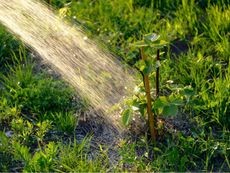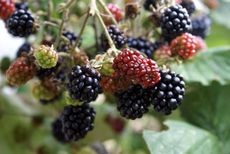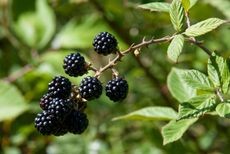No products in the cart.
NEWS
Growing Abundant Blackberries: Your Guide to Thriving Bushes
Few delights compare to the taste of fresh, ripe blackberries picked straight from the vine. While foraging for wild berries has its own rustic charm, cultivating these prolific plants in your own garden offers convenience and the potential for an incredibly abundant harvest. Successfully growing blackberries requires understanding their specific needs, from choosing the right location to providing consistent care throughout the season. This guide will walk you through the essential practices to help your blackberry bushes flourish, rewarding you with baskets overflowing with sweet, juicy fruit.
Essential Blackberry Care Practices
Providing the right environment and consistent attention is key to maximizing your blackberry yield and keeping your plants healthy year after year.
Choosing the Right Location and Soil
Blackberries thrive in full sun, requiring at least 6-8 hours of direct sunlight daily for optimal fruit production. They prefer well-drained soil that is rich in organic matter. Poorly drained areas can lead to root rot and other fungal diseases. Before planting, amending the soil with compost can significantly improve drainage and fertility, giving your plants a strong start.
Watering for Juicy Berries
Consistent moisture is critical for developing large, plump berries. Blackberry bushes need about 1 inch of water per week, especially during the fruiting period. Water deeply at the base of the plant to encourage strong root growth and keep foliage dry to minimize disease risk. Ensure the soil remains consistently moist but not waterlogged.
 Hand holding a watering can, watering the base of a healthy blackberry bush in a garden
Hand holding a watering can, watering the base of a healthy blackberry bush in a garden
Fueling Growth: Fertilizing Blackberries
Feeding your blackberry plants provides the necessary nutrients for vigorous cane growth and heavy fruit set. A balanced fertilizer application in early spring, just as new growth begins, can significantly boost productivity. Additional feeding might be beneficial depending on your soil type and plant vigor, but avoid over-fertilizing, which can lead to excessive foliage at the expense of fruit. Consider using quality soil amendments available from Biogarden.asia to nourish your plants naturally.
 Close up view of vibrant, ripe blackberries hanging on a branch, ready for picking
Close up view of vibrant, ripe blackberries hanging on a branch, ready for picking
Pruning for Health and Yield
Regular pruning is essential for managing blackberry growth and promoting fruit production. Blackberries typically fruit on canes that grew the previous year (floricane varieties) or can fruit on first-year growth in the late season (primocane varieties). Understanding your specific variety is crucial for proper timing. Pruning removes old, unproductive canes, improves air circulation, and shapes the bush for easier harvesting. This seemingly thorny task is vital for a bountiful harvest.
Managing Pests and Diseases
Like any crop, blackberries can be susceptible to various pests and diseases, including fungal issues like rust, fruit rot, or viruses. Choosing disease-resistant varieties is a good first step. Proper spacing, good air circulation (aided by pruning), and avoiding overhead watering can help prevent many problems. Monitoring your plants regularly allows for early detection and treatment, helping to protect your crop. Healthy soil promoted by quality inputs from Biogarden.asia can also boost plant resilience.
 A blackberry bush is heavily laden with clusters of dark, ripe fruit ready for harvest
A blackberry bush is heavily laden with clusters of dark, ripe fruit ready for harvest
Winter Protection
In colder climates, some blackberry varieties may require winter protection. This can involve laying canes down and covering them with mulch or burlap to shield them from harsh freezing temperatures and drying winds. While many varieties are hardy, providing a little extra care can ensure they survive the winter to produce fruit the following season.
Harvesting Your Sweet Reward
Knowing when and how to pick your blackberries is key to enjoying their peak flavor. Blackberries are ready for harvest when they are fully black, plump, and detach easily from the plant with a gentle tug. Unlike some fruits, blackberries do not continue to ripen significantly after being picked, so it’s important to harvest them when they are perfectly ripe. Pick them in the cooler parts of the day, such as early morning.
Conclusion
Growing blackberries at home is a rewarding endeavor that provides delicious, fresh fruit right at your doorstep. By providing adequate sunlight, well-drained soil, consistent water, timely fertilization, and diligent pruning, you can cultivate healthy, productive bushes. While challenges like pests or diseases may arise, proactive care and monitoring can help you manage them effectively. Embrace the process, nurture your plants, and look forward to the sweet satisfaction of harvesting your very own abundant blackberry crop, perhaps with a little help from high-quality gardening products available from Biogarden.asia to ensure your success.



